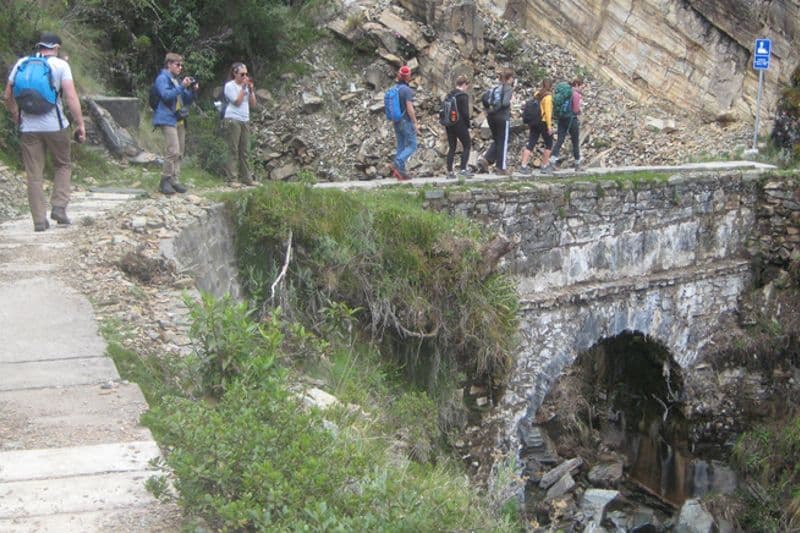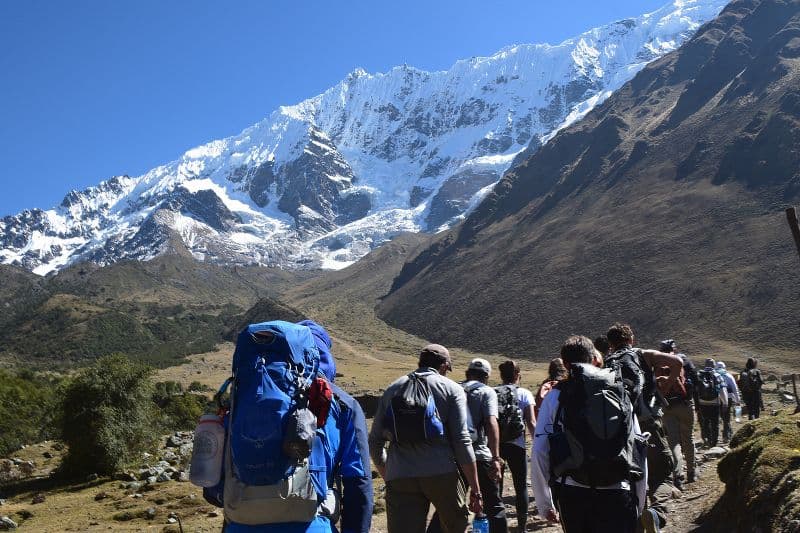Alternative route to Machu Picchu by Hydroelectric
One of the most frequent questions among tourists from around the world is how to get to Machu Picchu. There are 3 answers. The first is through a train trip to the town of Aguas Calientes, at the foot of the Wonder of the World. The second is with the popular 4-day trekking route known as the Inca Trail. The last one is with the alternative route through the hydroelectric power station. This little-known way to arrive at the Inca llaqta takes more time than the train but it is much cheaper. In addition, beautiful landscapes are covered which makes this trip an unforgettable adventure.
- The Inca Citadel of Machu Picchu
- Three ways to get there
- Alternative route to Machu Picchu by Hydroelectric
- Other treks that arrive at Machu Picchu by Hydroelectric
- To take into account
The Inca Citadel of Machu Picchu
The Inca citadel of Machu Picchu is a construction made of stone whose purpose was that of urban, religious center and resting place for the Pachacutec ruler and his family. It is estimated that it was built in 1450. Due to its location on the slopes of a mountain, getting there was never easy. During the Tahuantinsuyo the way to do it was through the network of Inca or qhapac ñan roads that led directly to the upper part of the enclosure currently known as Puerta Del Sol or Inti Punku. Today, this is one of the 3 ways to get to the Wonder of the World. The other two are via the train whose final point is the town of Aguas Calientes, at the foot of the Inca archaeological site. The last one is with the alternative hydroelectric route. Since the American explorer, Hiram Bingham made known the importance of the Inca City to the world; many tourists travel their buildings year after year. However, getting there is an easy task.
Three ways to get there
- Inca Trail – It is the way as the Incas used to arrive at Machu Picchu. Today is a 4-day, 3-night hiking route that covers approximately 39.6 kilometers of Inca trails made more than 600 years ago. It is recognized as one of the best 5 hiking trails in the world.
- The route by train – Currently, it is the way to reach the Wonder of the World most used by tourists from around the world. It is generally part of the Ollantaytambo station, 78 kilometers from the city of Cusco. However, there are some services that do it from the Poroy station (11 kilometers from Cuzco). The final stop is in Aguas Calientes from where buses leave (30 minutes) until the entrance gate to the Inca Citadel.
- The alternative route by hydroelectric – It is the least known way to get to Machu Picchu. It is also the most economical. It starts from the city of Cusco by bus to the hydroelectric station in the town of Santa Teresa. From there, we continue walking to the town of Aguas Calientes. From there, buses leave at the gateway to the Wonder of the World. It takes on average 6 or 7 hours.
Alternative route to Machu Picchu by Hydroelectric
- Cusco – Hydroelectric – There are private services that take tourists directly to the hydroelectric plant for a few dollars. The price is cheaper than the train ride and the Inca Trail. The other way is by taking public buses that depart from Antonio Lorena Avenue in Cusco. In total it covers almost 200 kilometers and takes almost 5 hours.
- Hydroelectric – Aguas Calientes – From the hydroelectric station also serves trains to Aguas Calientes station. However, the most common way to get to Machu Picchu in this way is through a walk of about 2 hours. This route goes parallel to the Vilcanota River and crosses beautiful jungle landscapes. In total, 10 kilometers of abundant flora and fauna are covered.
- Aguas Calientes – Machu Picchu – From the Aguas Calientes station, buses depart for the Wonder of the World. These take 30 minutes until the entrance door. The other option is to go back for a walk of approximately 2 hours. The road is steep and well signposted. In total it is estimated that 400 meters are climbed by trails of 9 kilometers away.

Other treks that arrive at Machu Picchu by Hydroelectric
The Inca Trail is the only trekking route to Machu Picchu which does not pass through the route Hydroelectric-Aguas Calientes. All the others run through different high Andean landscapes until arriving to the Wonder of the World in this way.
- Salkantay hike – It runs approximately 72 kilometers in 5 days and 4 nights at high altitude as the ‘Abra Salkantay’ (4,572 masl). Then it descends to the jungle edge until it reaches Aguas Calientes by hydroelectric route. This was chosen by National Geographic as one of the 25 best hiking trails in the world.
- Hike through Lares – A hiking trail that travels 37 kilometers in 4 days and 3 nights until you reach the Wonder of the World by way of hydroelectric. The highest point of the adventure is the Condorpasa pass, at 4,370 masl.
- Choquequirao-Machu Picchu Hike – One of the most challenging routes to the Wonder of the World. It covers a total of 115 kilometers in 8 days and 7 nights. On the way, you will cross the archaeological site of Choquequirao, known as ‘the other Machu Picchu’ due to its resemblance to the Inca Citadel. In the last section, you reach Aguas Calientes by the hydroelectric route.
- Inca Jungle – Another popular route for travelers from all over the world. It is the same alternative route that leads from Cusco to the Inca Citadel through the hydroelectric route. The only difference is that during the 4 days and 3 nights of the trip, adventure sports such as trekking, cycling, canoeing, and zip-lining are practiced, as well as a relaxing afternoon in the thermal baths of Santa Teresa.

To take into account
Arriving at Machu Picchu through the hydroelectric route is one of the most adventurous and economic ways to reach the Wonder of the World. To enjoy one hundred percent of the route, the following recommendations should be taken into account.
- Book the Machu Picchu Ticket in advance in order to enter the Inca City without any setbacks. The route will not be worth anything if you do not access the Inca site.
- The dry season (from April to October) is the best time of year to make the route. The landscape is more beautiful and there are no frequent rains.
- If you consider doing the route on your own it sounds very risky, there are tours that take and bring the visitor in this way.
- In any case, the visitor must bring sunblock and poncho for the rain. It is also important to have at your disposal a mosquito block, waterproof clothing, a hat or cap, a flashlight and, of course, a camera.
Getting to Machu Picchu by hydroelectric gains popularity day by day. However, it is worthless if you do not acquire the Machu Picchu Ticket in time. The reservation is online. Do it now!


